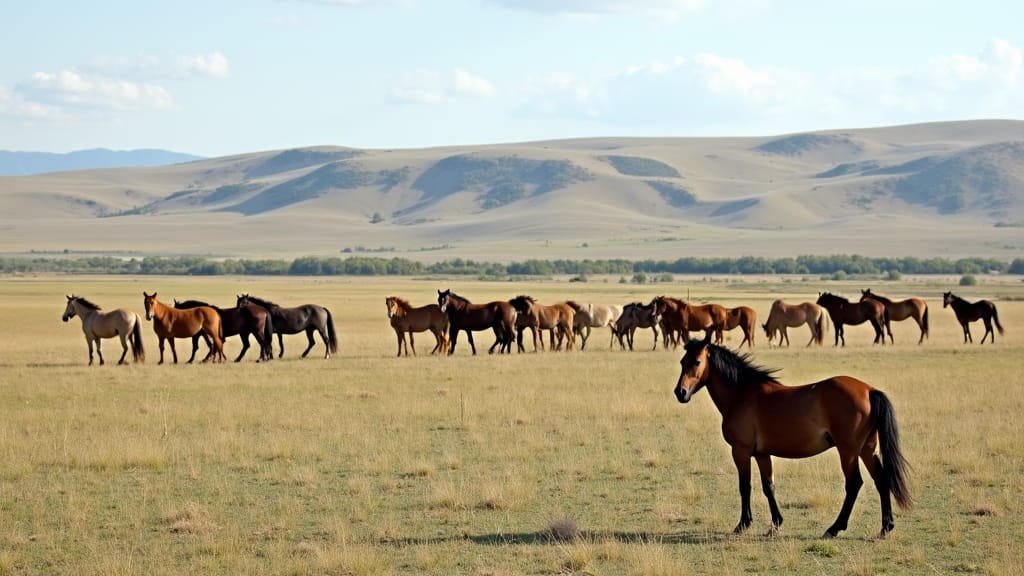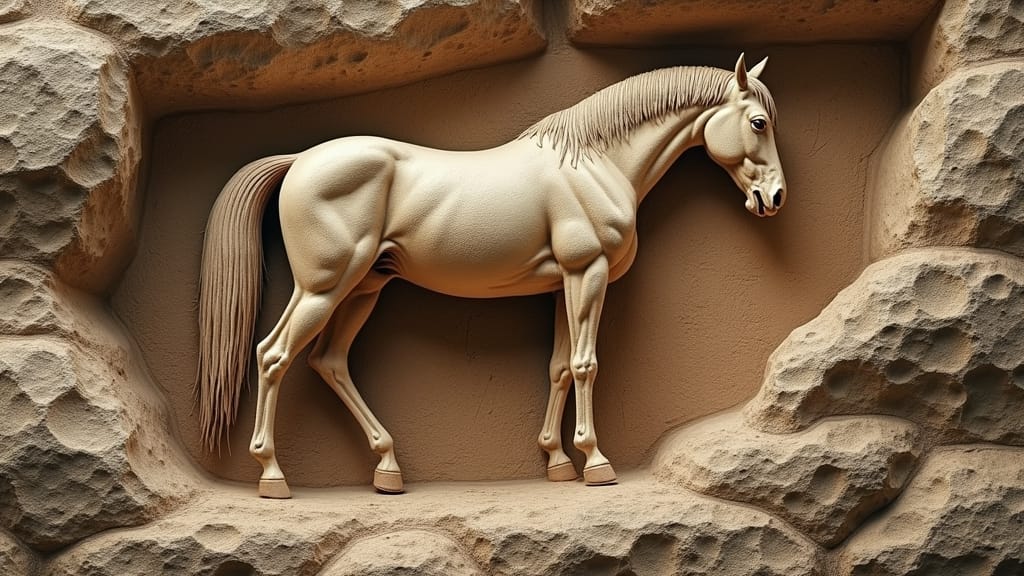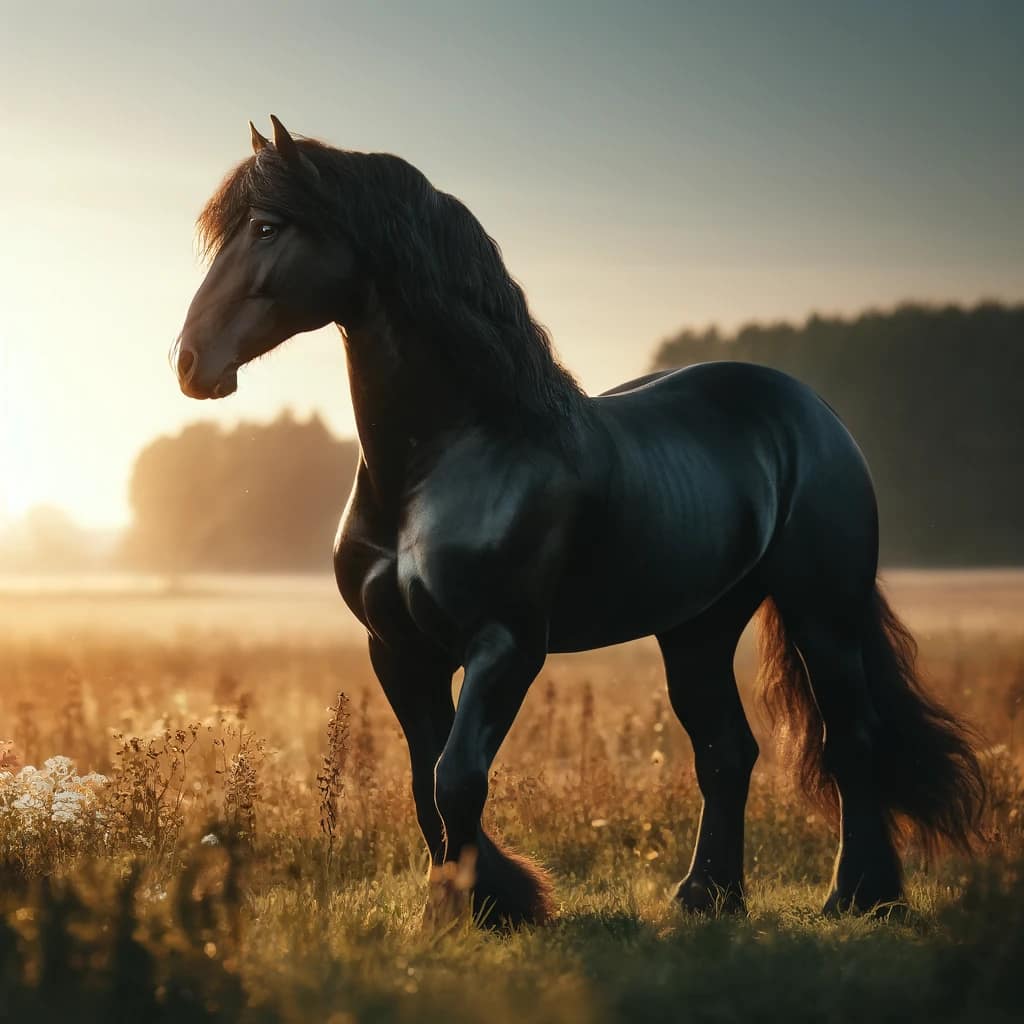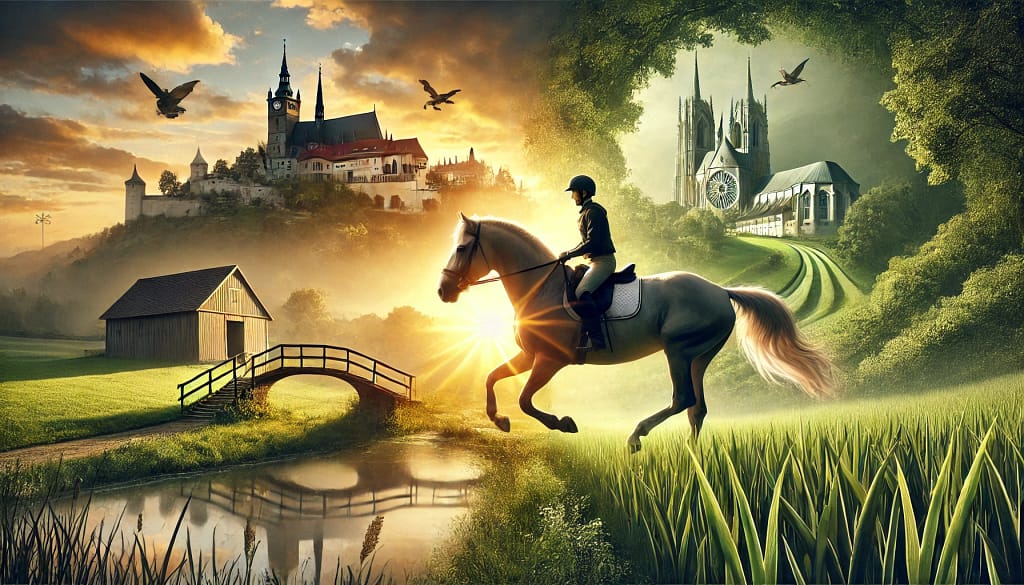
Evolution Of Horse Breeds Over The Centuries
Horses have moved from wild animals to beloved workmates and sporting heroes throughout history. The evolution of horse breeds over the centuries shows how human needs and natural selection have shaped them into the diverse animals we see today. I have spent time researching and writing on this topic, and I want to share the intriguing story of how horse breeds have changed from the ancient past to modern times.
Historical Roots and Early Domestication
The story of modern horse breeds starts in the ancient past. Archaeological findings suggest that horses were first domesticated over 5,000 years ago. Early humans discovered that these animals could provide transportation, help in farming, and serve in conflicts. Over time, wild horses gradually transformed into early domestic breeds that had characteristics pleasing to people such as endurance and temperament.
Archaeologists and historians have pieced together a timeline of domestication that begins in the grasslands of what is now Central Asia. The original wild horses, smaller and more agile, slowly adapted to work alongside humans. As these horses were kept for specific tasks such as pulling loads and carrying warriors, selective breeding became a common practice. I find it interesting how the traits selected during early domestication laid the groundwork for the variety of breeds we see today.
During this period, many tribes and early civilizations began to refine the traits they wanted in their horses. This led to the gradual development of specialized breeds that would later become famous across continents. The careful selection of horses with desirable qualities was a practical decision aimed at maintaining a steady supply of reliable animals.
Additional archaeological discoveries have provided extra context, revealing that early breeders not only cared about physical strength but also about the temperament and behavior of the animals. Ancient cave paintings and artifacts offer clues into how societies in different regions prioritized speed, agility, or calmness in their horses. These insights help us track down the sequence of changes that transformed wild steeds into the trusty companions of early civilizations.
Selective Breeding and Changing Roles
As human societies evolved, so did the roles that horses played in daily life. In early agricultural communities and later in medieval societies, horses were essential for plowing fields, transporting goods, and fighting in wars. The need for different types of horses prompted breeders to select specimens with traits suited to diverse tasks.
Selective breeding came into its own as civilizations began to see clear advantages in having horses that could perform specialized roles. In many parts of the world, breeders focused on developing breeds that could excel either in strength, speed, or stamina. Over time, this pursuit of performance led to clear divides between racing horses, workhorses, and those bred for cavalry and ceremonial purposes.
Breeding also started to influence the physical appearance of the horses. Breeders chose animals that not only worked well but also had specific physical markers. Characteristics such as muscle structure, body size, and coat color became criteria for selection. I have learned that early breeders often recorded these features meticulously, which helped pass on the best traits from one generation to the next.
- Strength and Endurance: Essential for plowing fields and carrying heavy loads.
- Speed and Agility: Critical qualities for horses used in warfare or racing events.
- Temperament: Calm and cooperative behavior was highly prized, especially in horses working closely with people.
Over time, selective breeding not only improved physical capabilities but also refined the behavior and instincts of horses. Communities began to document breeding records and outcomes, which in turn helped them fine-tune the selection process. This methodical approach laid a foundation that modern breeders continue to mirror even as technology has advanced.
Domestication of Horses on Amazon
The Impact of Global Trade and Exploration
The rise of global trade and the age of exploration played significant roles in horse evolution. As explorers and traders moved between continents, they brought with them new breeds and ideas about horse care. These exchanges widened the gene pool and brought a variety of traits to different regions.
Before international travel became common, horse breeds were mostly confined to local or regional groups. However, as long-distance travel expanded, so did the movement of horses. This exchange led to famous breeds merging characteristics from different continents. I find it fascinating how local breeding practices across Europe, Asia, and Africa intermingled to create horses with distinctive abilities.
Explorers and traders contributed to the spread of horse breeds by introducing animals adapted to one climate into entirely different environments. In some cases, these introductions improved local stocks; in others, they led to the decline of indigenous breeds. With trade routes being established, a blend of performance, beauty, and practicality evolved into a variety of breeds suited for numerous tasks.
- Exchange of Genetic Material: The introduction of new breeds broadened genetic diversity, leading to hybrid vigor in some cases.
- Adaptation to Different Climates: Breeds imported from one region often adapted to new conditions, becoming hardier or developing new physical traits.
- Cultural Exchange: Techniques and standards of breeding, passed along with horses, enriched the practices of development in various parts of the world.
Additional historical records indicate that the mixing of diverse horse lineages often resulted in next-level cool new characteristics. The impact of such cross-continental exchanges also included changes in saddle design, riding techniques, and training methods, all of which contributed to how horses were perceived and used across different societies.
Modern breeding of horses on amazon
Modern Breeding and Genetic Advances
Modern breeding practices have brought even more refinements to the evolution of horse breeds. Recent decades have seen a scientific approach to breeding that considers the genetic makeup of horses alongside practical performance. Advances in veterinary science and genetic research have added new layers of precision to the selection process.
Today, horse breeders use detailed genetic information to decide which traits to improve and preserve. With modern testing, it is possible to predict genetic conditions and give a boost to beneficial traits. This scientific approach does not just rely on physical testing, but also on deep analysis of the genes that control muscle development, bone density, and even behavior.
Modern technology and genetic studies have allowed breeders to produce horses that excel in sports such as racing, jumping, and dressage. The scientific community has also contributed to better animal welfare by helping breeders avoid practices that might compromise a horse’s health. I appreciate how knowledge and tradition come together today to ensure that each horse has the best chance for a healthy life.
The current methods blend innovative genetic screening with classical breeding techniques, creating an all-in-one approach that honors both science and tradition. Researchers are constantly mapping out genes linked to performance, and these findings are gradually transforming how breeders plan for the future.
Preservation of Lost Breeds and Heritage Efforts
Not all breeds in history have survived into modern times. Many horse breeds have faded due to changes in agriculture, warfare, and industry. Preservation efforts today aim to protect those breeds that might otherwise disappear. It is a careful balance between maintaining genetic diversity and honoring the legacy of past breeds.
Historic breeds not only add depth to our understanding of history but also offer unique traits that could prove useful in niche roles or heritage farming methods. Conservation efforts involve both governmental and community organizations. I have observed that local history groups and agricultural societies often take pride in reviving and maintaining these unique breeds.
Various organizations work to maintain records, host exhibitions, and even create breeding programs dedicated to these at-risk breeds. This work often involves valuable research into historical breeding practices and the natural characteristics of the animals. The aim is to preserve a living history that can be appreciated by future generations.
Efforts to save lost breeds have led to alliances between scholars, breeders, and conservationists. They document the unique traits of these horses and work to keep their genetic legacy alive. By understanding how and why certain breeds have disappeared, modern conservation strategies can help ensure that the diversity of horse breeds continues into the future.
In addition to practical breeding programs, several rural projects have been initiated to bring attention to historical breeds. These projects not only help preserve genetic diversity but also support local economies by attracting tourists and promoting heritage farming practices. Such endeavors demonstrate that protecting our past can also shape a sustainable future.
Frequently Asked Questions
This section addresses common queries about the evolution of horse breeds through the centuries. Here are some questions along with detailed responses.
Question: How did early domestication affect horse evolution?
Answer: Early domestication set the stage for selective breeding. Ancient humans selected horses based on their endurance, speed, and temperament. This helped shape the future trajectory of horse breeds.
Question: What role did global trade play in the evolution of horses?
Answer: Global trade enabled the exchange of genetic material and breeding practices. Horses from varied climates and cultures intermingled, leading to a wider variety of traits within many breeds.
Question: How do modern genetic techniques influence current horse breeding practices?
Answer: Modern techniques allow breeders to analyze genetic data and make informed choices to give a boost to beneficial traits and reduce hereditary health issues. This scientific approach supports both performance and overall animal well-being.
To clear things up further, it is important to note that many myths about horse breeding have been debunked. Detailed studies and historical records have provided answers to questions that once seemed shrouded in mystery. By examining these facts, enthusiasts can better appreciate the progress made over millennia.
Continuing Developments and Future Directions
The evolution of horse breeds is an ongoing process. Future developments will likely continue to blend traditional breeding techniques with modern genetic insights. I see a future where the preservation of heritage breeds works hand-in-hand with the creation of new breeds designed for specialized roles.
As societies change, the roles of horses may switch up once again. Emerging trends in eco-friendly practices and sustainable agriculture have renewed interest in traditional breeds that display resilience and efficiency. In many rural areas, horses continue to be valued for their reliability and hardiness.
Scientific research contributes to these developments by offering insights into how genetic diversity can be maximized while still achieving desired performance. Modern breeders are increasingly looking to gene banks and ancestral traits preserved in heritage studs. These efforts not only safeguard animal health but also honor centuries of tradition in horse breeding.
The collaborative nature of research in this field brings together geneticists, veterinarians, and experienced breeders. They share data, historical records, and personal breeding experiences to guide future selection practices. With these combined efforts, the evolution of horse breeds is poised to support the needs of modern society while preserving a rich cultural heritage.
Further initiatives include pilot projects that aim to integrate digital record systems with traditional breeding logs. These innovative projects are designed to ensure transparency and accuracy in breeding practices, allowing future breeders to better map out improvements and track the performance of distinct bloodlines.
Horse breeders on Amazon
Practical Advice for Enthusiasts and Aspiring Breeders
For those interested in the evolution and preservation of horse breeds, practical advice is available. Research into historical breeding practices can provide valuable lessons for modern breeders. Consistent record-keeping and careful observation of each horse’s performance are key ideas to adopt.
Breeding decisions should be informed by both historical knowledge and modern scientific research. Understanding the characteristics of different breeds starts with reading historical records, examining genetic tests, and even visiting heritage farms. I recommend connecting with local breeding clubs and historical societies to exchange ideas and techniques.
- Maintain Detailed Records: Keep track of lineage, physical traits, and behavioral characteristics for each horse in your care.
- Study Heritage Breeds: Learn from the traits of older breeds that have maintained their distinctiveness over long periods.
- Use Modern Testing: Embrace genetic testing and modern veterinary checks to ensure healthy breeding practices.
- Get involved with the community: Share your findings and experiences with fellow enthusiasts to build a supportive network.
Additional friendly advice for newcomers includes attending workshops and seminars that focus on both the art and science of horse breeding. Many seasoned breeders are eager to team up with aspiring enthusiasts, sharing age-old wisdom alongside modern insights. These collaborative efforts are critical in nurturing the next generation of responsible horse caretakers.
Looking Back and Ahead
The adventure from early wild horses to the diverse breeds we know today is both fascinating and complex. The evolution of horse breeds highlights how human activities, scientific inquiry, and natural adaptation shape living creatures. Every era has contributed to the genetic makeup of horses. Even today, breeders continue to learn from the past while embracing new methods.
The history of horse breeding is a living chronicle that connects us with ancient practices, cultural exchanges, and modern science. It is a testament to both human ingenuity and the resilience of nature. I appreciate how much information is available that demonstrates the deep relationship between people and horses over the centuries.
This exploration into the evolution of horse breeds is not just a look into the past. It provides guidance for current and future policies in horse care and breeding. As we move forward, it is important to combine the wisdom of age-old traditions with the benefits of modern technology. Such balanced practices ensure that the diversity and vibrancy of horse breeds are preserved.
The story continues with each new generation of horses and breeders. The ongoing exchange of ideas and genetics promises that the legacy of these magnificent animals will endure. Whether for work, sport, or simply as companions, horses remain an integral part of human culture and history.
Reflecting on the past while keeping an eye on tomorrow, it becomes clear that every decision made in the breeding arena contributes to a larger tapestry of living heritage. This careful synthesis of history, science, and community spirit is what will ultimately drive the future of horse breeding, ensuring that these noble animals continue to thrive in generations to come.
Breeds of Horses and Their Characteristics on Amson
Build Your Business and Learn Affiliate Marketing
See you there!
Our Unique Value Propositions
Discover why Chwals GPT is the top choice for equestrians looking to build their online presence (register for free)
Tailored Equestrian Expertise – Community Connection – Intuitive User Experience



